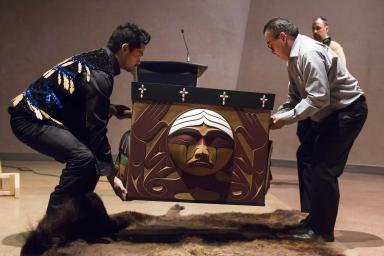For over a century, the Indian Residential School system in Canada violated the rights of First Nations, Inuit and Métis children. Canada’s Truth and Reconciliation Commission (TRC) was established in 2008 with the goal of contributing to truth, healing and reconciliation.
The TRC hosted public events, gathered statements from survivors, and collected documents to create a historical record. In June 2015, the TRC concluded the residential school system was a form of cultural genocide and delivered 94 calls to action to redress this legacy.

